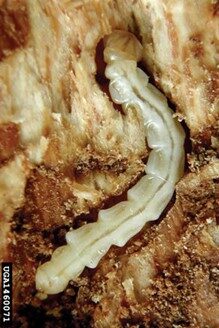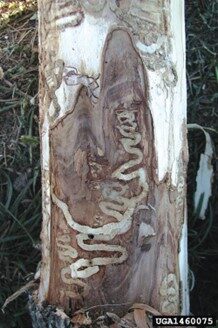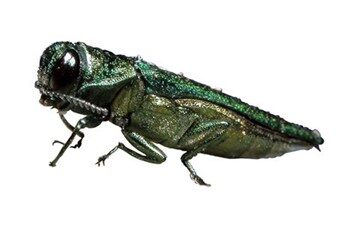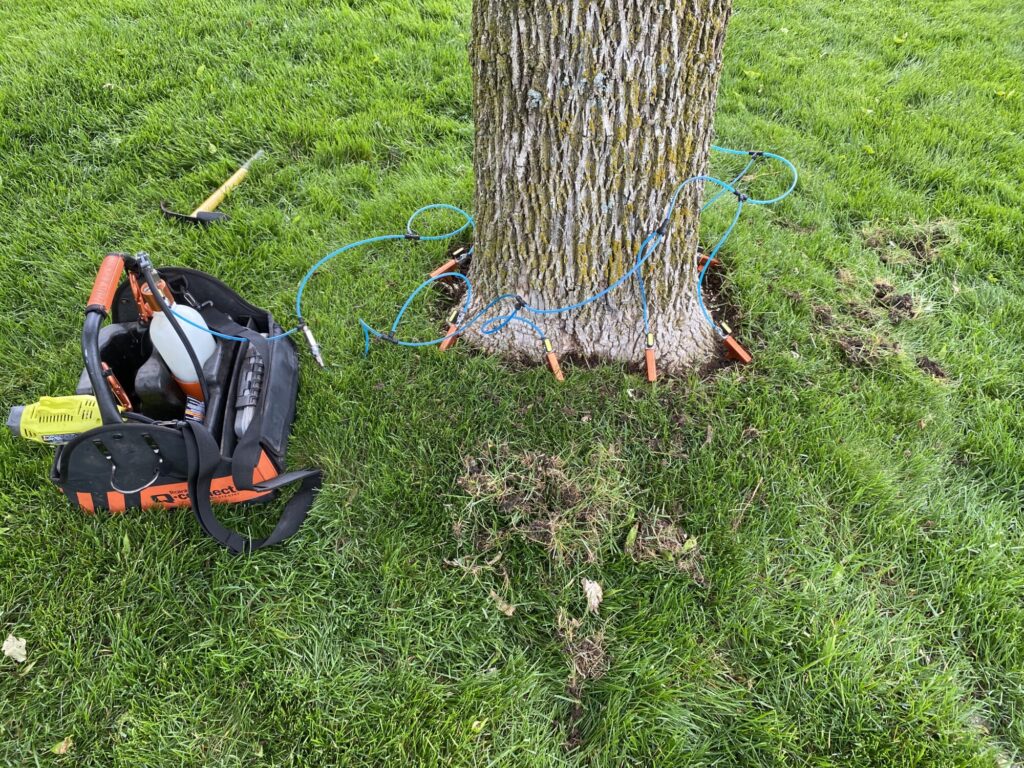Another spring has come and gone, and we’re into the last few weeks of the season before entering the summer months. This means many of our woodland critters have been waking up from overwintering and are preparing to complete their lifecycle once again. 2024 is famously a big year for insects with the periodical cicada emergence, but we should still keep in mind the annual emergence of boring insects such as Emerald Ash Borer.
The emerald ash borer is an exotic insect native to Siberia/Asia. It is a wood-boring insect, meaning it spends a portion of its lifecycle chewing through wood tissues inside of a tree. EAB spends its larval stage feeding on vascular tissues of ash trees, creating serpentine galleries just underneath the bark. This feeding that the larval insect does causes severe dieback and damage to ash trees and is by far the most destructive stage of the insect’s life. These larvae may sometimes overwinter and continue feeding for a second season but usually will pupate and emerge the following spring as adult beetles. They leave a distinct D-shaped exit hole as adults. The adults will feed on ash leaves for a brief period and mate. The females will lay their eggs in the bark crevices of susceptible ash species, and the cycle begins all over again.



EAB most readily attacks Green ash trees and will move onto white, purple, and blue ash if green ash is depleted in an area. Symptoms of EAB infestation include dieback and defoliation of branches, bark peeling or falling away from branches, and epicormic shoot growth from trunk and limbs. EAB has been in the Chicagoland area for almost a decade now. It was first introduced to the US through pallet wood in the mid-2000s in Michigan. Early research conducted on the beetle included feeding trials to find out what was the most desirable food sources for the insect. A note from the author: counting beetle frass for early trials was just as fun as it sounds!
Management
EAB control has been to treat with insecticides early enough in the season so the larval stage could be controlled inside of the tree. We do not have any effective repellent insecticides, only ones that can kill the larval stage of the insect. Originally, a soil application of a chemical was completed to translocate through the tree’s vascular tissues. Later on, researchers found that the best control came from trunk injections of an insecticide called Emamectin benzoate. Arborists can inject this insecticide into a green ash tree and have continuous control for several years before having to reapply.

What is the long-term management plan for ash trees in infested regions? Well, EAB will be with us for the long term. There are no options for eradication. There will also be a constant population of wild ash trees popping up in the native forests and ecosystems. These young trees will grow for a period and potentially reproduce new seedlings before also becoming a target for EAB and dying off. We likely won’t see any mature green ash trees anymore, unless they are treated aggressively with insecticide soil applications and injections.
Our existing mature ash trees will need consistent treatments to remain free of infestation. The initial boom of EAB has come and gone, but the insect will always exist in the background as a low-level static population. It is important to continue treating your mature healthy ash trees in order to keep them alive and thriving. Our Plant Health Care team at Homer Tree Care is well-equipped to treat ash trees for EAB and keep them healthy for many years to come. If you have an Ash on your property that is at risk, call us for a free estimate on treatment and an appointment with our PHC team for service.
